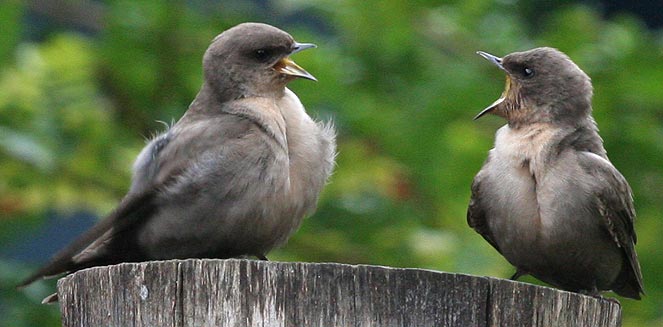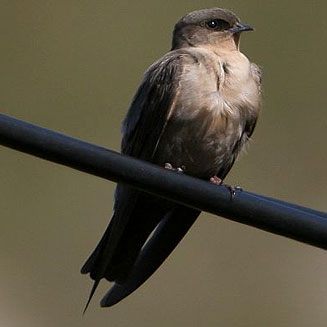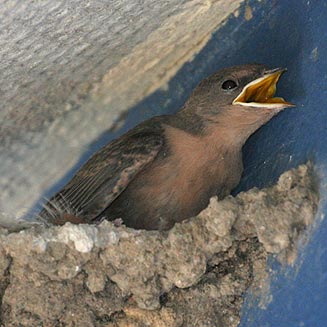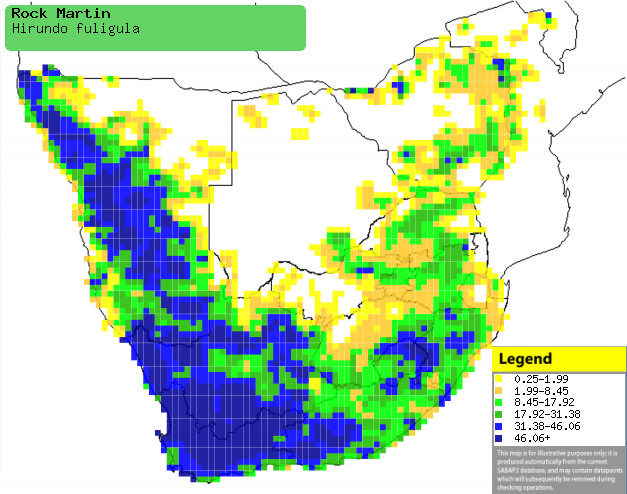|
Hirundo fuligula (Rock martin)
Kransswael [Afrikaans]; Inkonjane (generic term for
swallow), Unongubendala, Unongubende [Xhosa]; iNhlolamvula [Zulu]; Sisampamema
(generic term for swallows, martins, swifts and spinetails) [Kwangali];
Lekabelane (generic term for swallows or martins) [South Sotho]; Nyenganyenga
(generic name for swallow or martin) [Shona]; Mbawulwana, Nyenga (generic term
for swallow) [Tsonga]; Pęolwane, Phętla (generic terms for swifts, martins and
swallows) [Tswana]; Kaapse rotszwaluw [Dutch]; Hirondelle isabelline [French];
Felsenschwalbe, Steinschwalbe [German]; Andorinha-das-rochas-africana
[Portuguese]
Life
> Eukaryotes >
Opisthokonta
> Metazoa (animals) >
Bilateria >
Deuterostomia > Chordata >
Craniata > Vertebrata (vertebrates) > Gnathostomata (jawed
vertebrates) > Teleostomi (teleost fish) > Osteichthyes (bony fish) > Class:
Sarcopterygii (lobe-finned
fish) > Stegocephalia (terrestrial
vertebrates) > Tetrapoda
(four-legged vertebrates) > Reptiliomorpha > Amniota >
Reptilia (reptiles) >
Romeriida > Diapsida > Archosauromorpha > Archosauria >
Dinosauria
(dinosaurs) > Saurischia > Theropoda (bipedal predatory dinosaurs) >
Coelurosauria > Maniraptora > Aves
(birds) >
Order: Passeriformes > Family: Hirundinidae
 |
|
Rock martin juveniles, West Coast Fossil Park, Western Cape, South Africa. [photo H. Robertson, Iziko ©] |
 |
 |
| Rock martin, Rooiels, South Africa. [photo
Trevor Hardaker ©] |
Rock martin chick in nest, West Coast Fossil Park, Western Cape, South Africa. [photo H. Robertson,
Iziko ©] |
Distribution and habitat
Occurs in patches across Africa, absent from the rainforest
of central Africa and extending into Asia from the Middle East to Pakistan. In
southern Africa it is common in most of South Africa and Namibia, with smaller
populations in southern and northern Botswana, Zimbabwe and northern Mozambique.
As its name suggests it prefers rocky habitats, especially cliffs, quarries,
boulder-strewn hills and buildings.
|
 |
|
Distribution of Rock martin in southern Africa,
based on statistical smoothing of the records from first SA Bird Atlas
Project (©
Animal Demography unit, University of
Cape Town; smoothing by Birgit Erni and Francesca Little). Colours range
from dark blue (most common) through to yellow (least common).
See here for the latest distribution
from the SABAP2. |
Food
It exclusively eats flying insects, mainly hunting around
neon lights or over beaches at low tide. It also hawks prey disturbed by ploughs
or fires and is commonly observed feeding at termite alate emergences.
Breeding
- It is a monogamous, usually solitary nester, although loose colonies of up
to 40 breeding pairs have been found.
- Both sexes build the nest (see image below), which is a cup of mud
pellets lined with feathers, fine grass or plant down.
- It lays 2-3 eggs, which are incubated by both sexes for 17-29, usually
18-20 days.
- The young are brooded and fed by both adults, staying in the nest for
about 22-29 days. They still remain in the vicinity, returning to roost
every night until they are about 45-50 days old.
Threats
Not threatened, in fact widespread and common.
References
-
Hockey PAR, Dean WRJ and Ryan PG 2005. Roberts
- Birds of southern Africa, VIIth ed. The Trustees of the John Voelcker
Bird Book Fund, Cape Town
|
